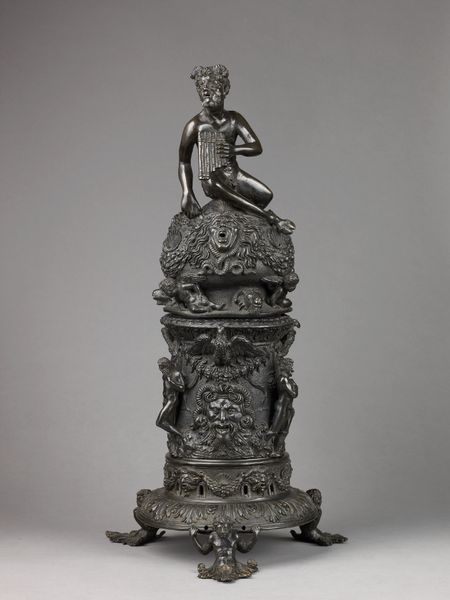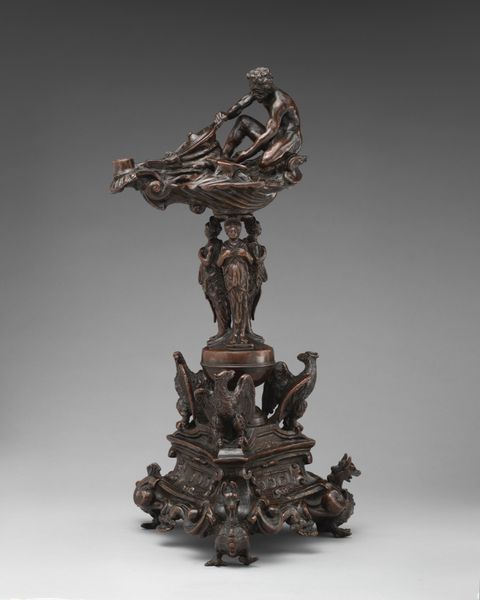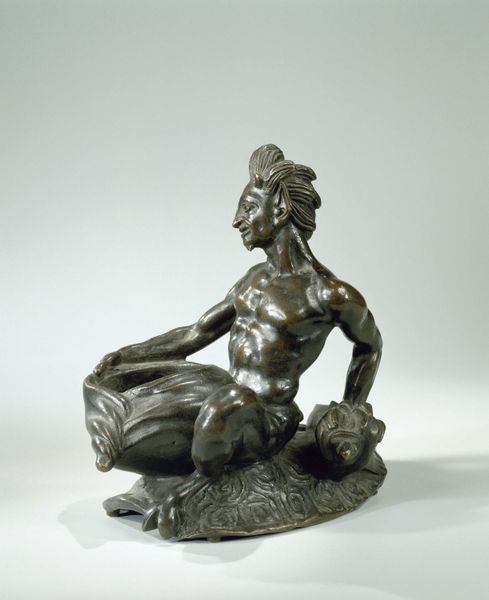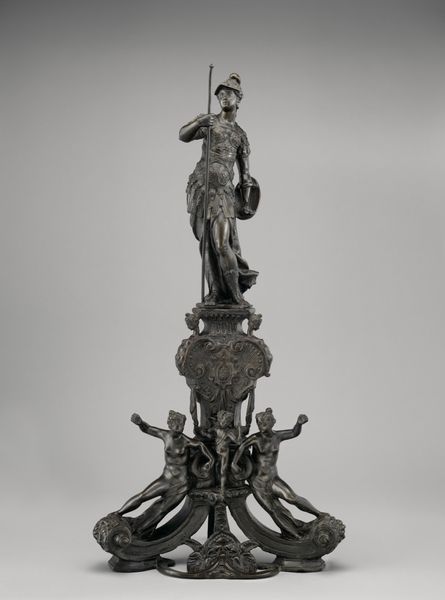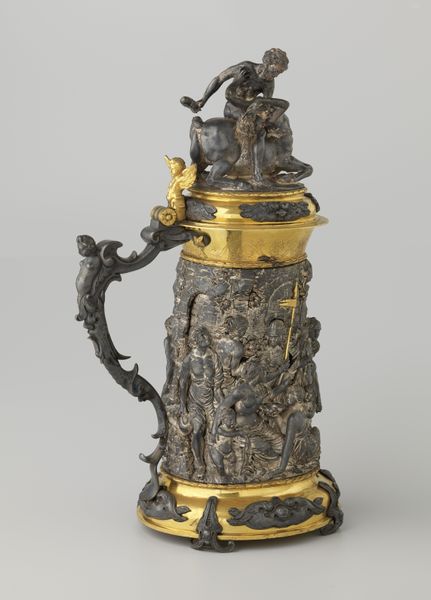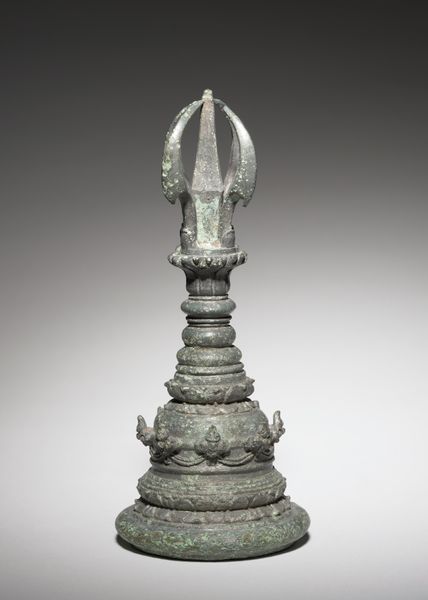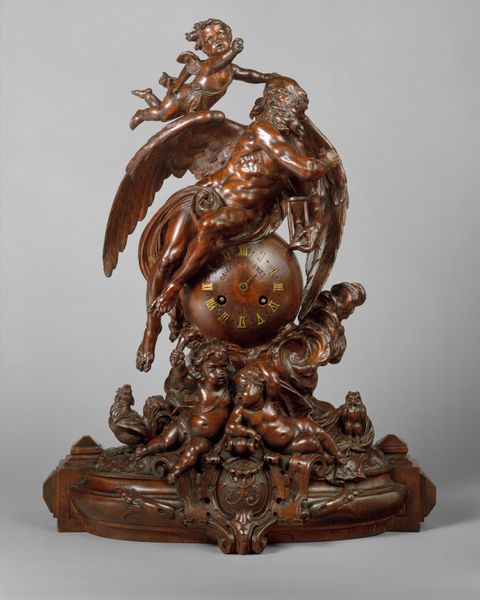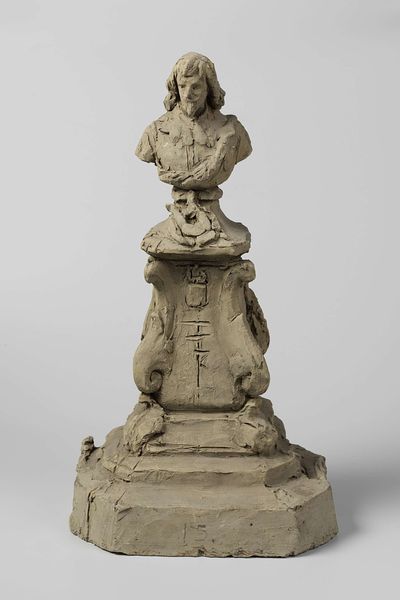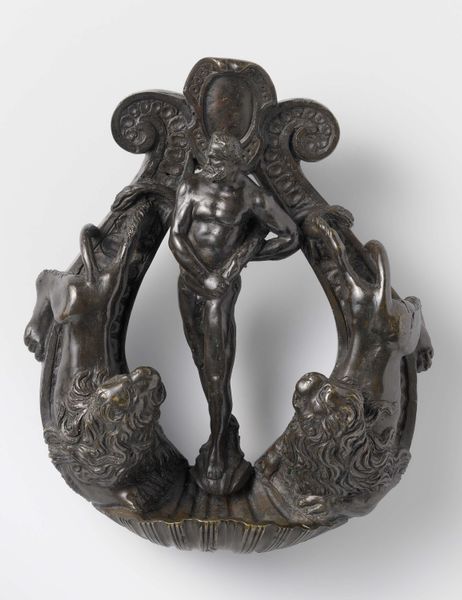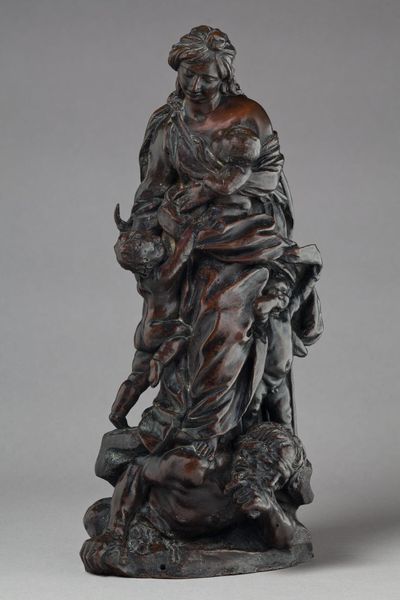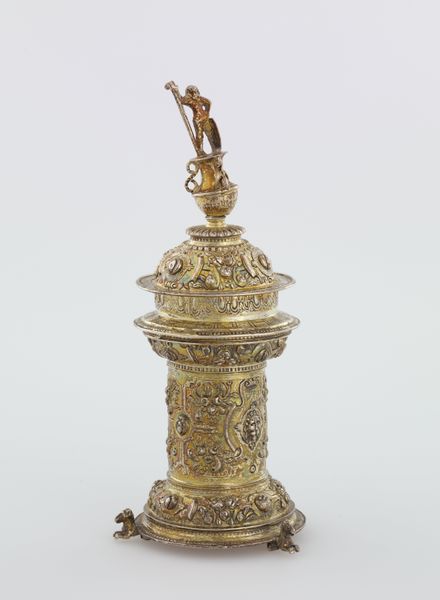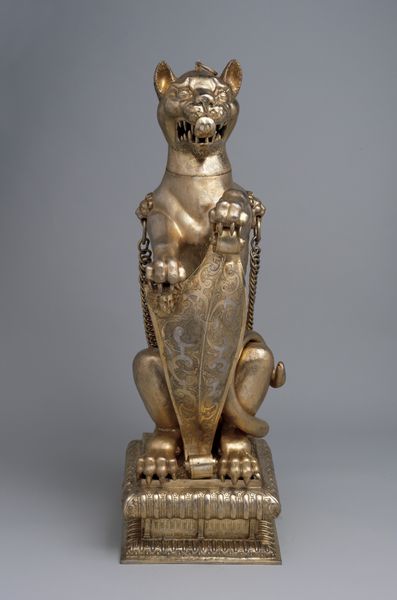
Perfume Burner Surmounted by a Satyr 1537 - 1553
0:00
0:00
bronze, sculpture
#
allegory
#
sculpture
#
bronze
#
mannerism
#
figuration
#
sculpture
#
decorative-art
Dimensions: H. overall 46.5 cm, h. of base 6.9 cm, h. of middle section, including bajonet joint 15.1 cm, h. of cover 25.7 cm.
Copyright: Public Domain
Curator: This extraordinary bronze sculpture is a Perfume Burner Surmounted by a Satyr, created sometime between 1537 and 1553 by Desiderio da Firenze. Editor: My first impression is pure delight. It’s such a wonderfully bizarre and elaborate object! There’s something almost theatrical about its design, darkly comical too. Curator: It certainly captures the Mannerist style—the complex composition and elongated figures are textbook examples of that period's sensibilities. This wasn't simply about utility; it was about displaying wealth and knowledge. A patron who owned this object would certainly be trying to express awareness of allegories and historical symbols, aligning himself or herself with learning, humanism, and refinement. Editor: And the symbolism! A satyr, panpipes in hand, relaxing above a seething mass of grotesque faces. Are those Medusa heads I see? And what’s with all the rams? This perfume burner is more than a pleasing smell dispenser. Curator: The rams suggest virility and strong will. Those grimacing masks circling below the satyr function as grotesque "apotropaic" decorations, to ward off bad luck and provide an additional layer of symbolic meaning. Of course, this kind of elaborate ornamentation became extremely fashionable in courts across Europe from the Renaissance onward. This incense burner is located at the Met, a wonderful testament to decorative arts during that era. Editor: There's an intriguing juxtaposition here between the untamed satyr figure—a symbol of nature, and unrestrained appetite—and the carefully sculpted artifice of the burner itself. Even perfume takes on new meaning when dispensed from such a sculpture: this object tells a larger story. Curator: Absolutely. Luxury goods became a key part of aristocratic life and an essential element of early modern diplomacy, and that reality certainly impacts the way that we, today, view and even use objects like these within our museums. The satyr atop the whole incense burner has to hold some powerful meaning—what exactly do you feel is the nature of it? Editor: It adds a carefree quality to what otherwise feels like a commentary on man’s darker instincts. To me, it seems that Desiderio is inviting us not to shy away from more grotesque parts of ourselves or human nature, and approach it instead with humor. Curator: I couldn't have said it better myself. The politics of beauty is fascinating. Editor: Indeed. And symbolism’s powerful nature, on the whole, creates pieces that persist with our memories.
Comments
No comments
Be the first to comment and join the conversation on the ultimate creative platform.
